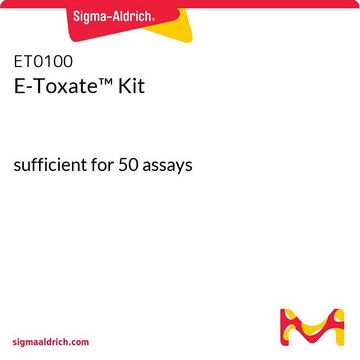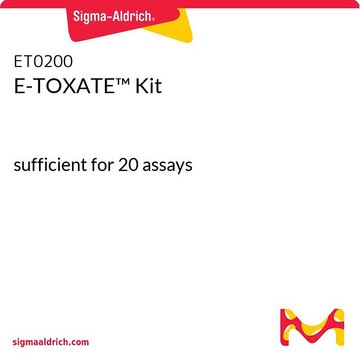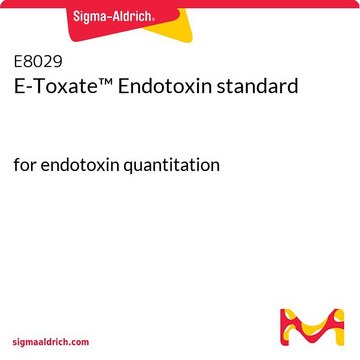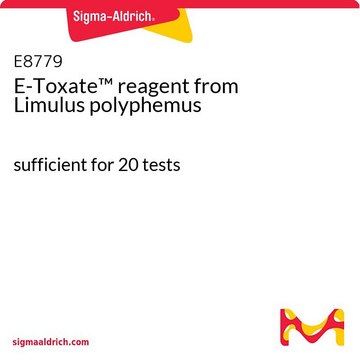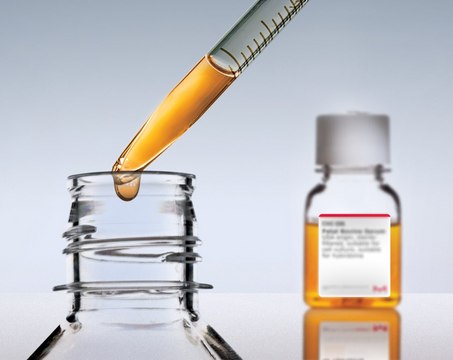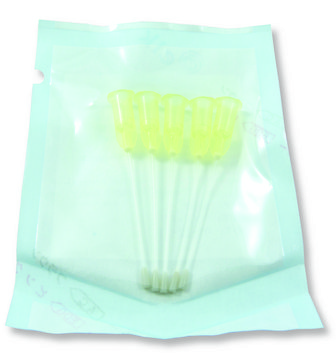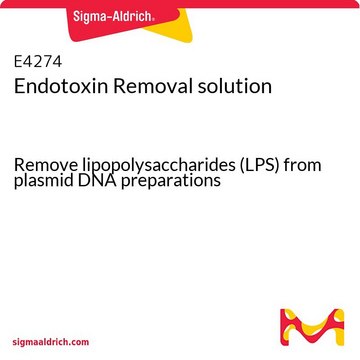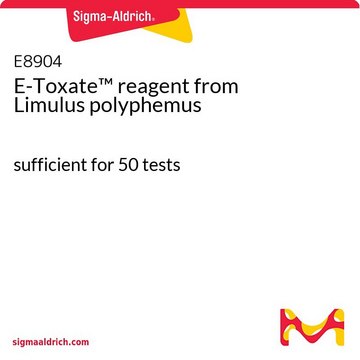ET0300
E-TOXATE™ Kit
sufficient for 100 assays
Synonym(s):
Endotoxin detection kit
Sign Into View Organizational & Contract Pricing
All Photos(1)
About This Item
UNSPSC Code:
12352202
NACRES:
NA.84
Recommended Products
Application
E-TOXATE™ Kit has been used in the semiquantitative determination of endotoxin levels in 0.1 % (w/v) dispersions of polyelectrolyte nanoparticle construct (NPs) and 0.1 % (w/v) polymer solutions.
Legal Information
E-Toxate is a trademark of Sigma-Aldrich Co. LLC
comparable product
Product No.
Description
Pricing
related product
Product No.
Description
Pricing
Storage Class Code
10 - Combustible liquids
Regulatory Information
高风险级别生物产品--毒素类产品
Choose from one of the most recent versions:
Certificates of Analysis (COA)
Lot/Batch Number
It looks like we've run into a problem, but you can still download Certificates of Analysis from our Documents section.
If you need assistance, please contact Customer Support.
Already Own This Product?
Find documentation for the products that you have recently purchased in the Document Library.
Intra-articular delivery of a nanocomplex comprising salmon calcitonin, hyaluronic acid, and chitosan using an equine model of joint inflammation.
Sladek S, et al.
Drug delivery and translational research, 8(5), 1421-1435 (2018)
H E Çolakoğlu et al.
Domestic animal endocrinology, 70, 106398-106398 (2019-11-05)
The aim of this study was to investigate some of the growth and transcriptional factors originating from oocytes and granulosa cells in follicular fluid and to identify the relationships between the basic blood metabolite-metabolic hormones and intrafollicular lipopolysaccharide (LPS) concentrations.
Svenja Sladek et al.
Drug delivery and translational research, 8(5), 1421-1435 (2018-06-28)
Polyelectrolyte nanoparticle constructs (NPs) comprising salmon calcitonin (sCT), chitosan (CS), and hyaluronic acid (HA) were previously established as having anti-inflammatory potential when injected via the intra-articular (i.a.) route to a mouse model. We attempted to translate the formulation to a
Xue Q Liu et al.
Immunology, 125(1), 14-20 (2008-09-19)
The development and maintenance of memory B cells (MBC) is dependent on germinal centres (GC) with follicular dendritic cell (FDC) networks. We have previously shown that FDC networks within GC of the spleen express a novel ligand for CD38 and
Atsuko Hayashida et al.
The American journal of pathology, 174(2), 509-518 (2009-01-17)
In pneumonia caused by the bacterium Staphylococcus aureus, the intense inflammatory response that is triggered by this infection can lead to the development of lung injury. Little is known, however, about the impact of specific virulence factors on this inflammatory
Our team of scientists has experience in all areas of research including Life Science, Material Science, Chemical Synthesis, Chromatography, Analytical and many others.
Contact Technical Service